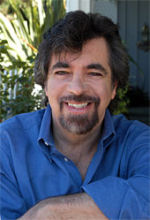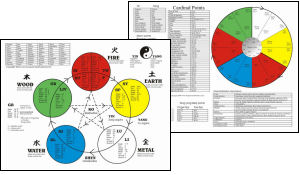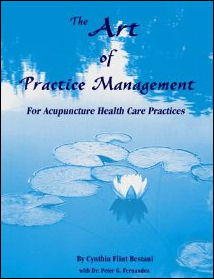Acupuncture & TCM Articles

Neil R. Gumenick is the founder and Director of The Institute of Classical Five-Element Acupuncture. Neil is a Worsley certified advanced teacher of Classical Five-Element Acupuncture and a practitioner with over 27 years of private practice experience. Neil holds three degrees from the College of Traditional Acupuncture (U.K.), and he participated for 10 years in the Master Apprentice Programô, led by Profs. J.R. & J.B. Worsley. Neil has taught at the USC and UCLA Schools of Medicine, the Worsley Institute of Classical Acupuncture, the Traditional Acupuncture Foundation, California Acupuncture College, Santa Barbara College of Oriental Medicine, and Pacific College of Oriental Medicine. He has been a Professor at Emperor's College of Traditional Oriental Medicine and SAMRA University of Oriental Medicine. Neil is co-author of The Art of Practice Management for Acupuncture Health Care Practices
Entry and Exit Points and Blocks
By Neil Gumenick, MAc (UK), LAc, Dipl. Ac
Classical Five-Element Acupuncture is set apart from other systems of acupuncture by its core premise of diagnosing and treating a patient's fundamental Causative Factor - the element among the five that is the source of imbalance.
In addition, this system recognizes that the level of a patient's imbalance (physical, mental, and spiritual) must be fully understood and taken into account in addressing the cause of illness.
Before we can successfully treat the cause of a patient's imbalance or address the level of the disease, however, it is vitally important to detect and remove any and all energetic blocks that may be present. Of all the various blocks that may overlay a patient's Causative Factor, Entry/Exit blocks are the most common to be found. Like so many aspects of diagnosis in this tradition, the presence of this block cannot be determined by symptoms, but only by our senses. In this case, we must rely entirely upon pulse diagnosis.

Nature's Energetic Movements
The movement of energy in Nature follows the Sheng cycle of the Five Elements, with each element creating and generating the element that follows in a particular order. We only have to look to nature to see that wood creates fire by burning; fire creates earth from the ashes; earth creates metal, for in the depths of earth the metals are formed and molded; metal creates water by containment, as well as by the formation of moisture in the air - as air is an expression of the metal element; water creates wood, as all plants grow in the presence of water.
In addition to the Sheng cycle, there is another flow of energy within the body/mind/spirit, a more superficial flow of energy. This flow is the Wei Qi or "defensive" energy, which circulates between the meridian pathway and the skin. The Wei Qi circulates throughout the body/mind/spirit following the numerical order of the meridians. It flows from Heart (designated by Roman numeral I) into the Small Intestines (II), from Small Intestines to Bladder (III), from Bladder to Kidneys (IV), to the Heart Protector, AKA Circulation/Sex and Pericardium (V), to the Three Heater AKA Sanjiao, (VI) to Gall Bladder (VII), to Liver (VIII), to Lungs (IX), to Colon (X), to Stomach (XI), and to Spleen (XII). From Spleen (XII), the energy flows back into the Heart (I), making a full and never-ending circle.
The Movement Between Meridians
As the energy circulates, it "exits" one meridian and "enters" into the following meridian. There is an acupuncture point on each of the 12 meridian pathways where the energy enters the meridian. This is called the Entry Point of the meridian. There is also an acupuncture point on each meridian where the energy leaves the meridian pathway. This is called the Exit Point of the meridian.
The following are the Entry and Exit points of each meridian. (Note that the first point on each meridian, with the exception of Colon 4, is the Entry Point. For the Heart, Small Intestines, Bladder, Liver, Colon, and Spleen meridians, the last point is the Exit Point. For the other meridians, the Exit Points must be memorized, as there is no consistent pattern.)
The Entry/Exit Block
During the initial examination, or at any time during the treatment process, we may find that the energy is blocked at the Wei level. As a block anywhere within the body/mind/spirit will disrupt the energy of the whole, any treatment will be ineffective until any and all blocks have been cleared. One of the most common energetic blocks we are likely to encounter in patients is a block between meridians at the Wei level, which we call an Entry/Exit block.
Let us imagine the Wei Qi circulating smoothly among all 12 meridians. Then, an accumulation of energy occurs at the point of exit of one meridian and the point of entry of the next. This could be the result of an accumulation of waste from an Official such that the normal flow of energy becomes clogged and impacted. It could be the result of stress and trauma, which overwhelms an Official, jamming its circulation. In either case, the circulating Wei Qi hits this accumulation like a wall. It recoils back on itself and, like a person pounding on a jammed door, gets increasingly frustrated and agitated. This agitation will be felt on the pulse as an excess of energy on that meridian. On the meridian that follows, on the other side of the "jammed door" where little or no energy is able to get through, we will feel the pulse as deficient.
Whenever we feel a relative excess of energy on the pulse of one Official and a relative deficiency on the Official that follows in the numerical order as listed above, we have an Entry/Exit Block between the two. To remove the block, we first tonify, bilaterally, the Exit Point of the first Official - the one with the excess - and then tonify the Entry Point of the following Official - the one with the deficiency.
Tonification Technique
In this system, the technique for tonification is as follows:
Insert the needle on the left side in the direction of flow of the meridian as the patient breathes out. Rotate the needle 180 degrees clockwise as the patient breathes in. Quickly and immediately remove the needle, and seal the needle hole with an alcohol swab and pressure. Repeat the above on the right side.
Pulse Diagnosis: The Key
In Classical Five-Element Acu-puncture, we measure the strength and volume of a pulse on a scale of minus 3 (recorded -3), to plus 3 (+3), indicating maximum hyperactivity, with a checkmark indicating a healthy and normal pulse for the given individual. Varying degrees of hypo- or hyperactivity are measured in increments such as -1/2, -1, -1 1/2 and so on down to -3 (barely palpable), or +1/2, +1, + 1 1/2 up to +3 (almost leaping out of the wrist).
If, for example, we felt a pulse of +1 on Liver (VIII) and -1 on Lungs (IX), we would clearly perceive an Entry/Exit block between these two Officials. We would then tonify both Liver 14 and Lung 1 in that order. We then check the pulses to see if the discrepancy between the two has been resolved. It is not unusual to feel a positive change on all Officials, as all will undoubtedly feel the relief.
It is not necessary for the pulse of the first meridian in the sequence to actually be in the "plus" range in order for an Entry/Exit block to be present. We are concerned with "relative" excess and "relative" deficiency. Therefore, were we to find Liver (VIII) to read -1 and Lungs (IX) to read -2, we would still have an Entry/Exit block, as a -1 pulse is still relatively strong in comparison to -2.
It is possible to detect more than one Entry/Exit block at a time on a given patient. In this case, we treat one block, check the pulses and, if we feel other blocks, we treat those in the same fashion until all are cleared.
It may sometimes be necessary to unblock through more than the Exit Point of one meridian and the Entry Point of the following. If, for example, we were to find a relative excess on Small Intestines (II) and a relative deficiency in Bladder (III) and Kidneys (IV), we would tonify Small Intestines 19 and Bladder 1. In most cases, the energy, once it has entered Bladder, will flow through the meridian and fill Kidney, as well. In some cases, however, we will also need to unblock the Exit Point of Bladder (point #67), and the Entry Point of Kidney (point #1). In rare cases, we might find that we have to continue still further with the Exit Point of Kidney (point #22) and the Entry Point of Heart Protector (point #1 on men, #2 on women). Pulse findings will reveal how extensive the block is and how far we must go with additional points of entry and exit in order to clear the meridians.
 
The Art of Practice Management for Acupuncture Health Care Practices
What you will find in this book is a specific, comprehensive approach that gets to the root cause of success in practice.
This new book presents acupuncture practice as art from the standpoint of centering, qi, and wholeness. It builds on the premise that practices succeed from bridging inner and outer aspects of the self. It is an inquiry into the self and addresses clear understandings and approaches to reputable patient care and practice qi. It brings in the five elements and work with the seasons of practice from training and start-up to growth, stability, expansion and transformation. The authors artfully bridges the essence of both patient and practitioner well-being without excluding the practicalities of financial well-being. This book very specifically and extensively shows how the different parts of practice nourish and feed one another and are interdependent on one another for the qi to flow synchronistically.
It explores the dual nature of procedures that work and those which do not in acupuncture health care practice, returning again and again to the delicate balance of practicality and spirituality.
|



